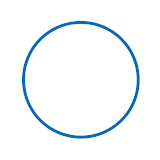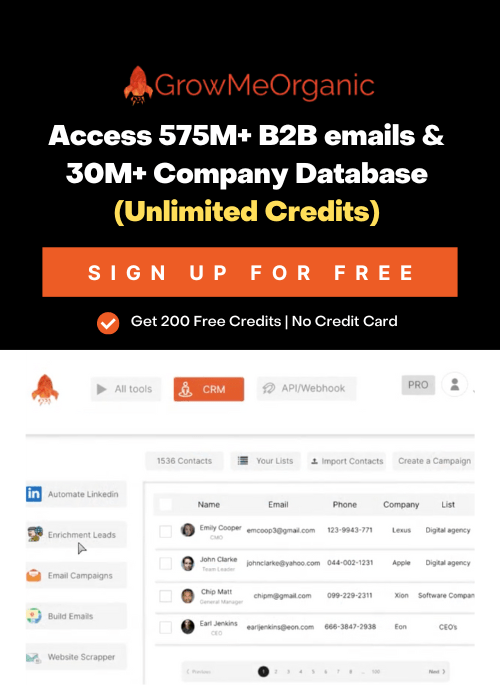Shooting too many emails at the same time can annoy your subscribers. On the other hand, sending a few could develop a lack of interest for your audience. So, what is the best email sending frequency (email cadence) to generate the highest engagement?
Sending emails less than once per month may result in email deliverability issues. This happens because people are less likely to remember you and might unsubscribe from your emails.
Also, out of the all emails sent some of those email addresses will no longer be valid, resulting in hard bounces and spam traps.
The best email sending frequency that generates the most engagement depends on your subscribers. That is what you have to offer to them in terms of value.
To know more let’s dive deep into the email sending frequency (Email Cadence) and how many you should send them at a particular time.
What is an Email Cadence?
Email cadence is the timing and frequency of emails optimized to receive the highest level of user engagement. It includes the types of emails you send to a subscriber in the customer journey.
For instance, an online educational organization might send emails to its users multiple times a week. So, they might be sending their promotional newsletters once per month.
So, every business has different email recipients and might offer various newsletters. Your email sending frequency depends on these factors
Email Frequency Analysis
Our data analysis will help you to know about-
- Entire email marketing sending landscape.
- Email engagement rates for an everyday mailer to a monthly mailer
- Email frequency benchmarks for various industries.
In the chart below, you can see GrowMeOrganic accounts and the percentage of accounts for each mailing frequency.
This chart depicts a very small percentage that sends emails every day. 18.50% of total account users send multiple emails per week.
Moreover, emails sent multiple times per week always have slightly fewer opens than emails sent monthly to the same users. So, the best email open rates are not bound exclusively to email cadence.
The click-through rate was higher for emails sent most frequently. Therefore, emails that showcase timely news or offers are clicked immediately, such as daily deals. However, this is followed by one per week or once in two weeks. So, a lower sending email frequency has better CTR results.
Email Frequency Based On Customer’s buying behavior in different Industry
Each business will provide different services and messaging that affect the number of emails. Let’s have a look at the email frequency.
| Industry | Days between Emails (median) |
| Agriculture Services | 11.50 |
| Arts and artists | 17.30 |
| Author | 12.60 |
| Beauty and personal care | 12.55 |
| Blogger | 9.70 |
| Business and finance | 11.80 |
| Consulting | 9.85 |
| Creative services/agency | 11.75 |
| E-commerce | 10.05 |
| Education and training | 10.65 |
| Educational institution | 8.80 |
| Entertainment and events | 12.70 |
| Health and fitness | 9.75 |
| Hobbies | 11.25 |
| Home and garden | 11.45 |
| Marketing and advertising | 8.50 |
| Media and publishing | 14.35 |
| Medical, dental, and healthcare | 14.10 |
| Non-profit | 11.45 |
| Publishing company | 9.80 |
| Real estate | 11.75 |
| Religion | 7.05 |
| Retail | 12.20 |
| Software and web apps | 10.85 |
| Travel and transportation | 12.55 |
How To Determine Email Frequency By Monitoring Metrics?
The favorable way to monitor your email cadence is to analyze your industry benchmarks and performance metrics by experimenting with different sending frequencies. Monitor your opens or clicks rates.
Conduct your A/B testing by sending half your list at one time and the other half at another time and then compare the results.
Apart from frequency, it’s important to consider how many content or special offers you plan to share with your recipients. Never send emails that don’t deliver value.
In email marketing, there is a point of diminishing returns. This means that the time and resources of creating and sending emails result in less return on investment.
Strategies For Finding Your Email Cadence
Let’s go through these 7 email cadence best practices to give you an idea to figure out your optimal email cadence.
Start With Your Email Marketing Goals
In email cadence, it’s important to consider the type of emails you send. So, start with your goals and see what you are trying to accomplish with your email marketing campaign.
For instance, if your goal is to provide information daily then send emails every day. But, people will only accept daily emails if they bring value every time.
So, if there is an increase in your unsubscribe rate then there is something that is not working.
Align Email Frequency With Customer Behavior
It is important to know your customers’ buying behaviors so that you can map your email cadence with the customer journey. This is helpful while working on email marketing automation workflows to send emails based on a subscriber’s action.
For instance, if a subscriber reads a blog post on a certain niche, you can send them a related follow-up email regarding that blog. Instead of just checking your email frequency, automate your emails. This allows you to let the subscriber dictate the best timing for their emails.
Set Expectations In Your Welcome Email
Always create a predefined automated welcome email. Welcome email lets you know about the frequency of your newsletter that you should send. You can also provide email frequency options by adding a link that allows subscribers to choose their preferences.
Personalization will empower them to feel in control. Check out this welcome email example from GrowMeOrganic.
Create Subscriber Segments With Frequency Options
In traditional email marketing, segmentation is used to send targeted emails to a smaller group of email subscribers. This increases engagement because your emails can be customized for each specific audience.
You can also create email segments based on your subscriber’s preferred email frequency. So, empower your readers with options.
Add A Survey To Your Newsletter
Embedding email surveys is another option to provide to your subscribers where they can select their preferences. In surveys, you can ask people if they like the current frequency or if they prefer receiving emails more or less frequently.
Your recipients are the best people to advise you on the frequency of emails. Use the survey results to segment your list according to the frequency with which they want to receive your emails.
Use A/B Testing To Find What Subscriber’s Preferences
It is better to analyze how your subscribers respond to different frequencies and timing. Email A/B testing can give you detailed insight.
For example, split your subscribers into two groups. Then send Group 1 weekly newsletters, and Group 2 bi-weekly. Then see which one results in higher open rates and CTR.
Even test out different times during the day, weeks, and content based on when the email. Keep testing until you find the results with the most successful email cadence for your audience.
Communicate With Other Teams In Your Organization
Always monitor that your organization is not sending too many emails at the same time. Most of the time people forget the difference between a sales email, product update, and a marketing newsletter.
So, align your sending frequency and timing with the other departments. Through this, you can avoid sending too many emails to your subscribers’ inboxes at the same time.
About Post Author
Anant Gupta
Growth Hacker, Marketing Automation Enthusiast & Founder of GrowMeOrganic























